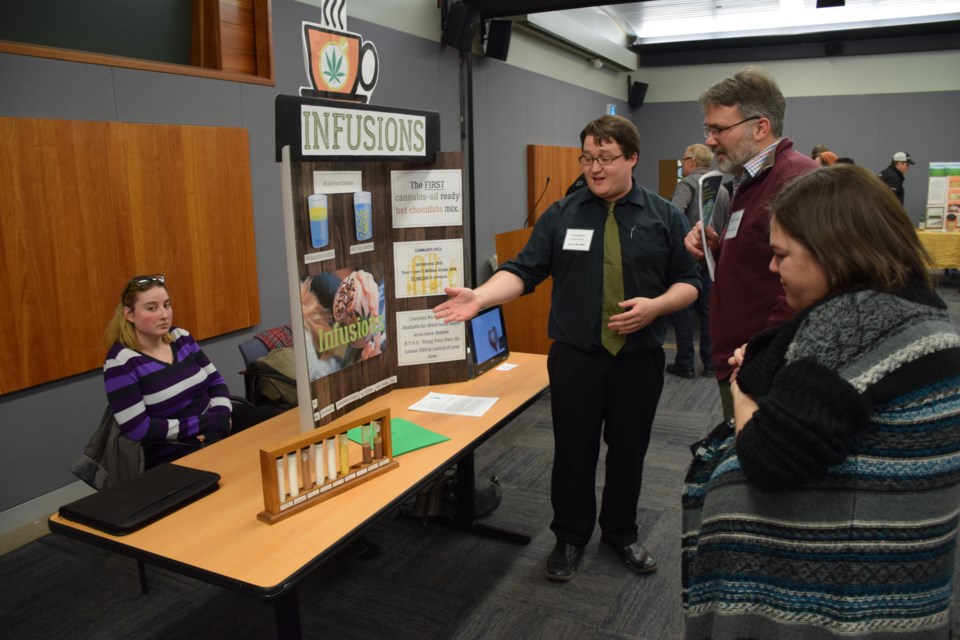Press a tiny sheet of cellulose between two tiny sheets of soy-based carbon black, and you have yourself a kind of micro-battery that stores energy from vibrations.
It appears that adding soy lecithin to hot chocolate mix makes for a much smoother and tastier delivery method for medical cannabis oil. And there might be a way to turn soybean plant material into a coffee filter, though the concept is mostly conceptual at this stage.
Friday was a big day for the humble soybean at the University of Guelph. Project SOY (Soybean Opportunities for Youth) held it finale at 1 Stone Road, with project displays and the handing out of cash prizes to the best of them.
U of G students both in Guelph and at the Ridgetown Campus, came up with 15 new soybean products. Some of those, like the mini battery, the hot chocolate, a fermented cider called Soyder, and assorted edible baked goods, could have commercial potential.
Robyn Ralph is Project SOY’s student coordinator. Students from graduate, under-graduate, and diploma programs were tasked with coming up with new uses for soy, she said. First prizes were valued at $2,500.
“This is fantastic for the industry,” she said. “It’s a way to find new uses for soy crop waste material, and to improve the marketability of soy products.”
The students tackled everything from soybean-based foodstuffs and paper, to its use in electrical engineering.
“We are seeing very unique projects this year,” she said.
Baraka Gitari and Connor Davies explained the capacitor that their team came up with that consists of a strip of cellulose sandwiched between two slices of carbon black. Gitari said carbon black can be produced from burned soy plant waste.
Davies said there are a number of small, hard to reach components in modern automobiles that run on small electrical charges. A tiny capacitor that is charged by the vehicle’s own vibrations could reduce repair costs and increase the life of automotive sensors.
Their project placed third in the graduate category. First went to a flame-retardant insulation developed by Ehsan Bhazin and Michael Snowdon.
David Weaver, who studies horticulture at Ridgetown, came up with a way to use soy lecithin in hot chocolate mix to better integrate cannabis oil. The lecithin helps evenly distribute the oil, which tends to rise to the surface in hot chocolate mixes that don’t contain lecithin.
He said patients who use cannabis oil in their treatment prefer hot chocolate as a delivery method. His product could be marketed as a companion product to cannabis oil, he added. Weaver won first prize in the diploma category.
Aaron Martin is part of a team attempting to make a coffee filter from soy plant waste. The prototype wasn’t very successful, but he believes that with the right processing it could be done.
“I believe anything is possible,” he said. “I think it could be economically viable given time and the right technology. It would be locally sourced, and it would give additional revenue to farmers.” Using soy to make paper filters, he added, would save trees.
The Soyder fermented soy beverage caused a buzz at the event, but not because of its alcohol content. There was no tasting of the product allowed at the non-licenced event, but the idea seemed to many to be a good one. And it was good enough to win the top prize in the undergraduate category.
